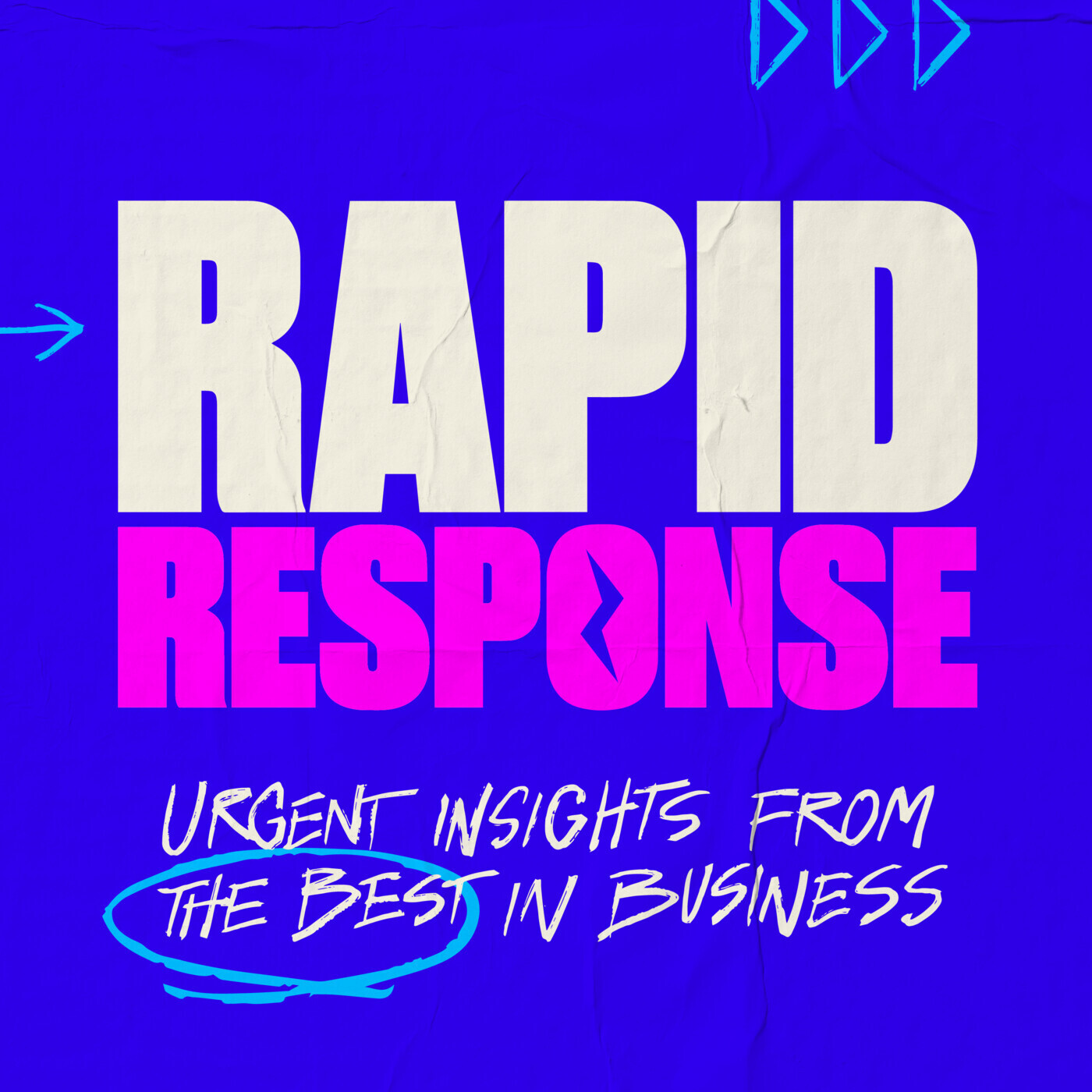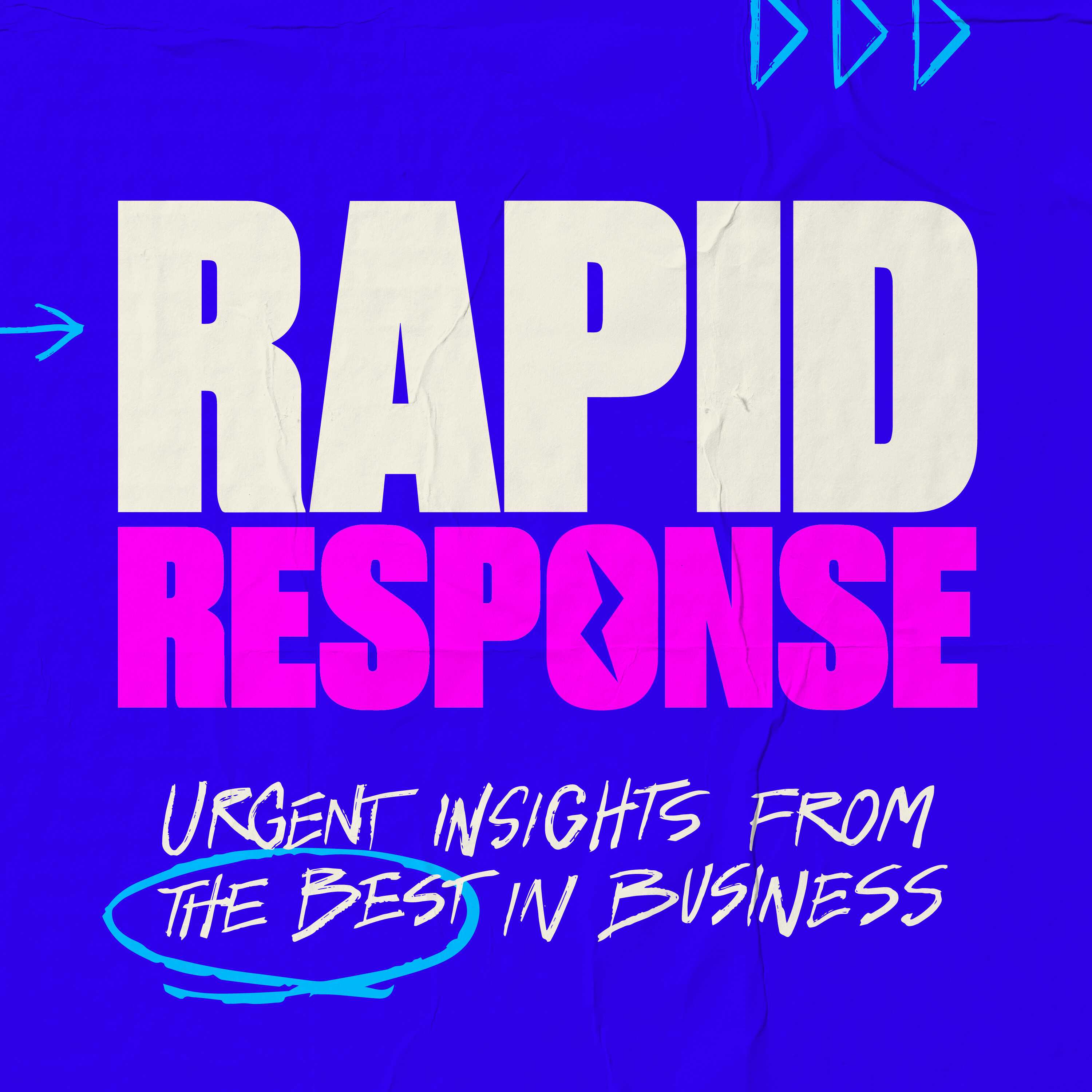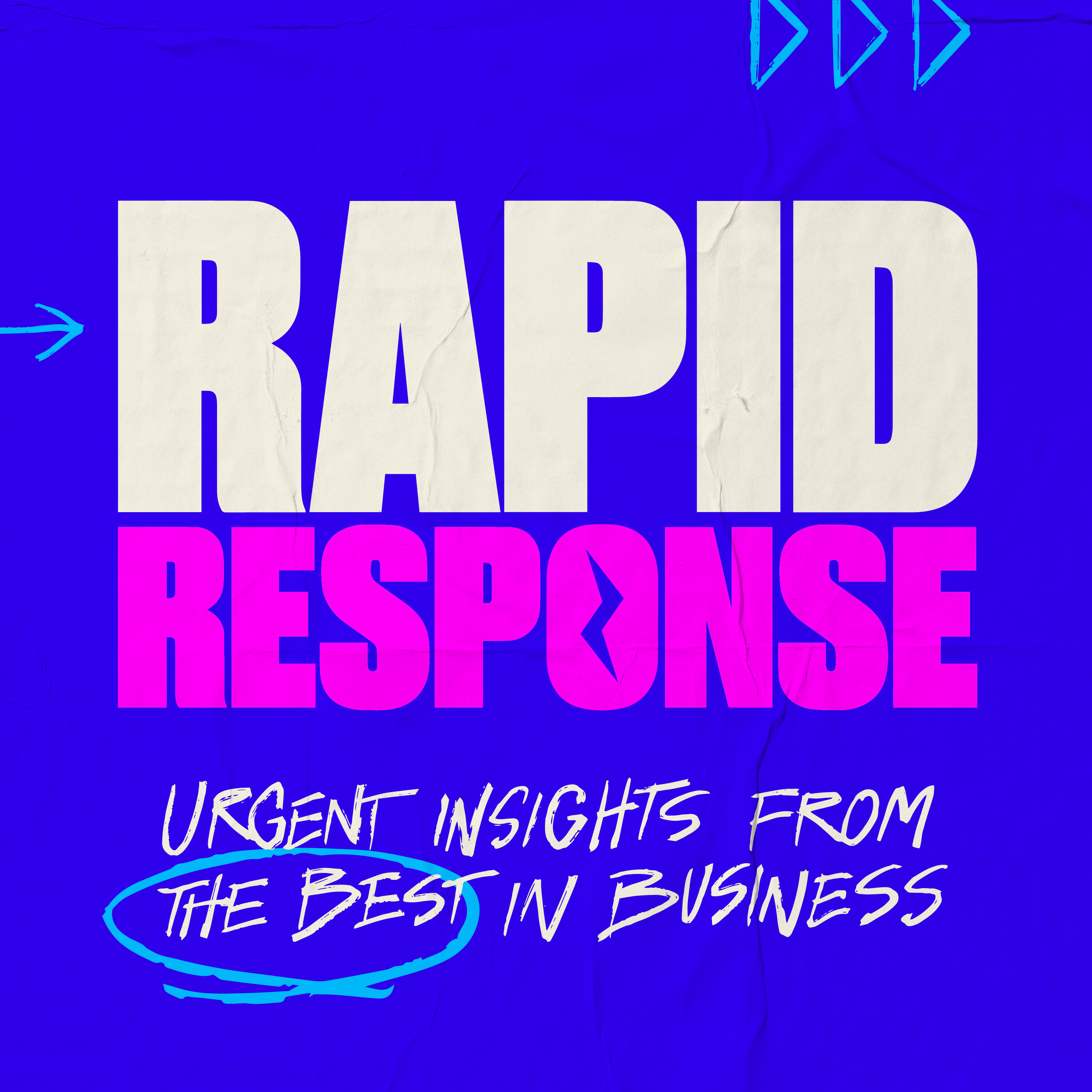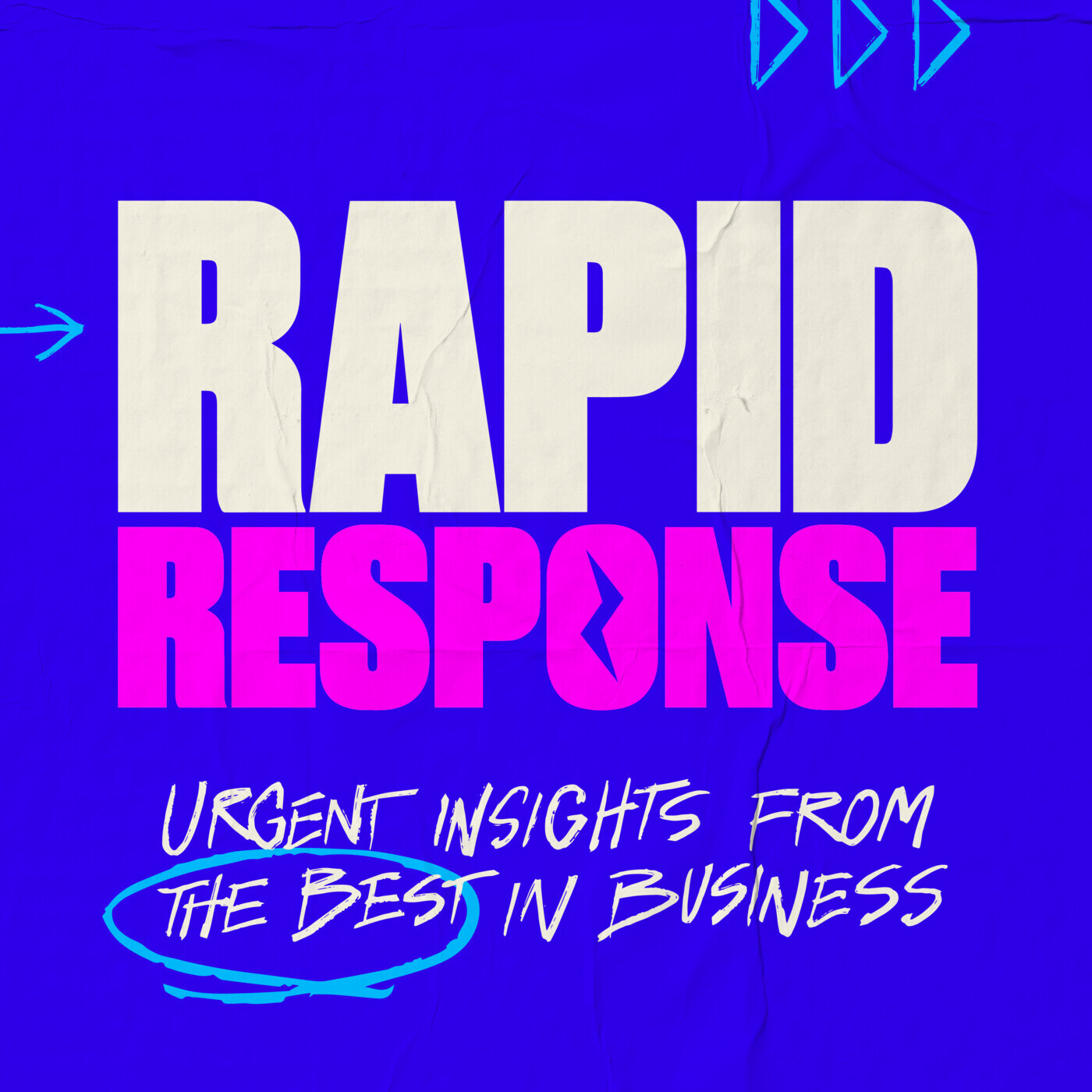
May 2, 2024 • 36min
Local veggies, national scale: Sweetgreen co-founders
Masters of Scale

Key Takeaways
- Start small and focus on quality before scaling - Sweetgreen began with one tiny 500 sq ft location and expanded slowly in the DC area before going national
- Take calculated risks to build brand and community - Hosting music festivals like Sweetlife helped create an identity beyond just being a restaurant
- Adapt and evolve at key inflection points - The founders had to rebuild systems, tools, and parts of their team multiple times as they scaled
- Invest in technology as an enabler - Sweetgreen was an early adopter of mobile ordering which gave them an advantage, especially during the pandemic
- Stay true to core values while innovating - Automation is being implemented in a way that aligns with Sweetgreen's commitment to fresh, quality food
- Think long-term - Going public was viewed as a financing event to fuel growth, not an exit
- Adapt to local markets - Real estate and expansion strategies are tailored to each city's unique characteristics
Introduction
This episode features the three co-founders of Sweetgreen - Jonathan Neman, Nathaniel Ru, and Nicholas Jammet. They share the story of how they grew Sweetgreen from a single 500 sq ft location near Georgetown University in 2007 to a publicly traded company valued at over $2.5 billion today. The episode explores key decisions and strategies that enabled Sweetgreen to scale while staying true to its mission of serving healthy, sustainable food.
Topics Discussed
Origins and Early Days (5:37)
The three co-founders met as freshmen at Georgetown University in 2003. They bonded over their shared experience as children of immigrant entrepreneurs and their frustration with the lack of healthy food options near campus. After taking an entrepreneurship class, they decided to solve this problem by opening their own restaurant.
- Initial idea was for a tiny 500 sq ft restaurant serving salads to friends
- Thought it would be easy - "We'll have this open by April 1st" Jonathan recalls naively
- Reality was much more challenging - landlord initially wouldn't return calls, costs were higher than expected
- First round of fundraising required pitching to hundreds of people to raise $300,000 from 50 investors
Early Growth and Challenges (13:54)
After initial success with their first location, Sweetgreen expanded to a second, larger location in DC's Dupont Circle in 2009. However, this expansion came with new challenges.
- New Dupont Circle location initially had no customers
- Founders had to get creative - played music outside, handed out samples to draw people in
- Evolved into hosting block parties and eventually the Sweetlife music festival featuring major acts like The Strokes
- "We looked at each other...it's almost like a no-brainer decision, because this is something that no other restaurant company would do." - Nathaniel on deciding to host a major music festival
Scaling Strategy (21:46)
Rather than franchising or expanding nationally right away, Sweetgreen focused on controlled growth in the DC/Maryland/Virginia region initially.
- Grew to about 20 locations in DMV area before expanding to other cities
- Allowed them to refine their model and build brand before tackling larger markets
- When entering New York, they redesigned the concept - new architecture, mobile app for ordering
- Required evolving team structure from generalists to specialists
- "What was right to get you from zero to 1 may not be right from 1 to 2" - Jonathan on evolving the team
Real Estate Strategy (26:06)
Sweetgreen takes a deliberate, localized approach to choosing restaurant locations in each city.
- In LA, focus is on accessibility
- In NYC, initially avoided Midtown to build brand in neighborhood communities first
- "We talk about scale nationally, but it really is like our business is 230 individual restaurants" - Jonathan
- Moved headquarters to LA in 2016 to position for national growth
Going Public (27:50)
In 2021, Sweetgreen went public on the New York Stock Exchange. The founders view this as a financing event rather than an exit.
- Allowed them to raise capital to fuel next phase of growth
- Creates some short-term accountability but doesn't change long-term decision making
- Provides "constructive pressure" to stay focused on executing business plan
Technology and Innovation (30:11)
Sweetgreen has been an early adopter of technology to improve operations and customer experience.
- Launched mobile ordering app early, giving them advantage when pandemic hit
- Use tech for forecasting, labor scheduling, food prep
- 60% of business now happens digitally
- Recently invested in automation through "Infinite Kitchen" technology
- Exploring AI for marketing, labor deployment, personalized recommendations
Automation and Labor (35:54)
Sweetgreen is implementing automation in new restaurants, but in a way they believe enhances rather than replaces human workers.
- Automation allows workers to focus more on hospitality, cooking, and development
- Seeing higher employee satisfaction and lower turnover in automated locations
- "We don't plan on eliminating any workers as part of the rollout" - Jonathan
Long-Term Vision (37:02)
The founders are focused on building Sweetgreen to last for the long-term, beyond their own tenure.
- Goal is for Sweetgreen to be a "100 year business"
- Implementing big ideas like automated kitchens while staying true to core values
- Adapting to changing consumer preferences and technology
Conclusion
The Sweetgreen story exemplifies how to scale a business thoughtfully while staying true to core values. Key factors in their success include:
- Starting small and proving the concept before rapid expansion
- Taking calculated risks to build brand identity beyond just the product
- Adapting systems, tools and team at key inflection points
- Leveraging technology as an enabler of growth and improved experience
- Maintaining a long-term perspective even after going public
- Innovating in ways that align with company mission and values
By focusing on quality, community, and innovation, Sweetgreen has grown from a tiny storefront to a national brand poised for continued expansion. Their journey provides valuable lessons for other founders looking to scale businesses in alignment with a broader mission and set of values.




